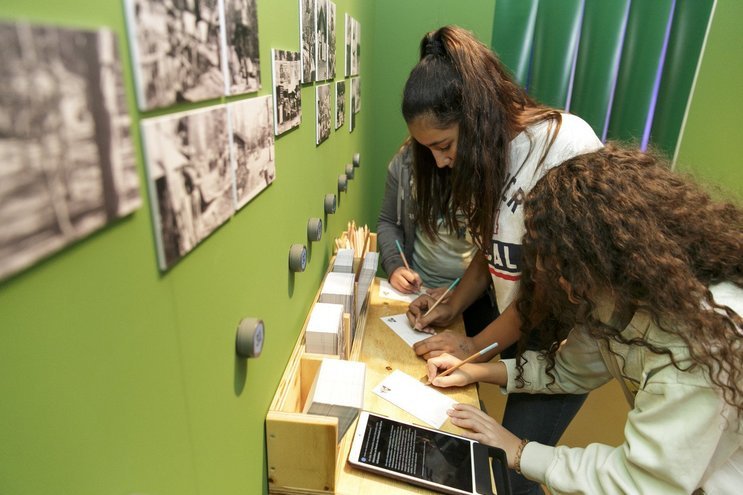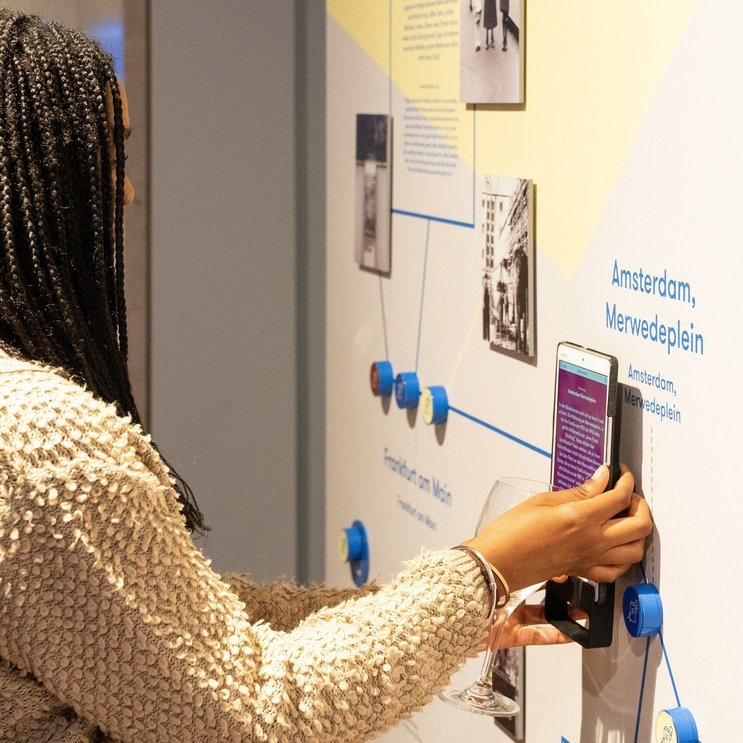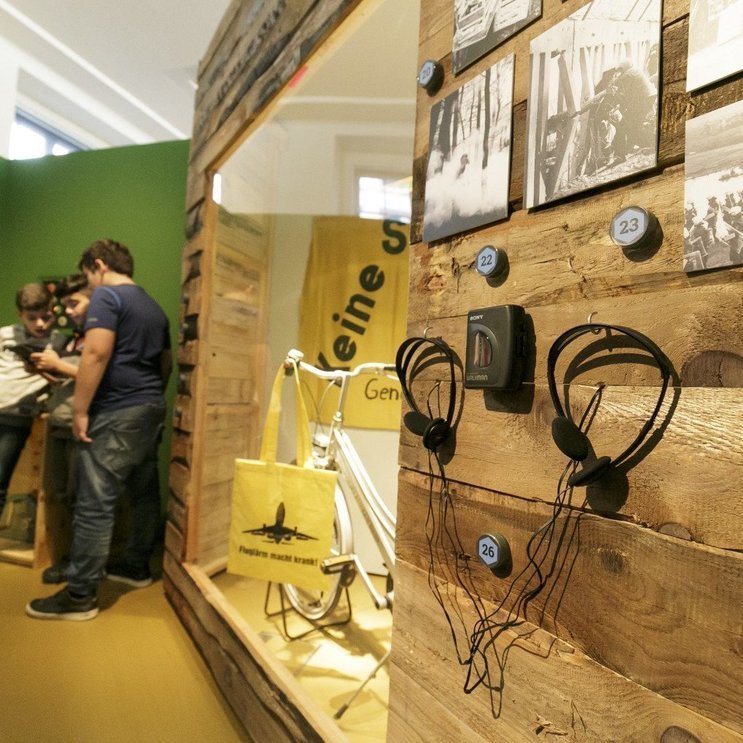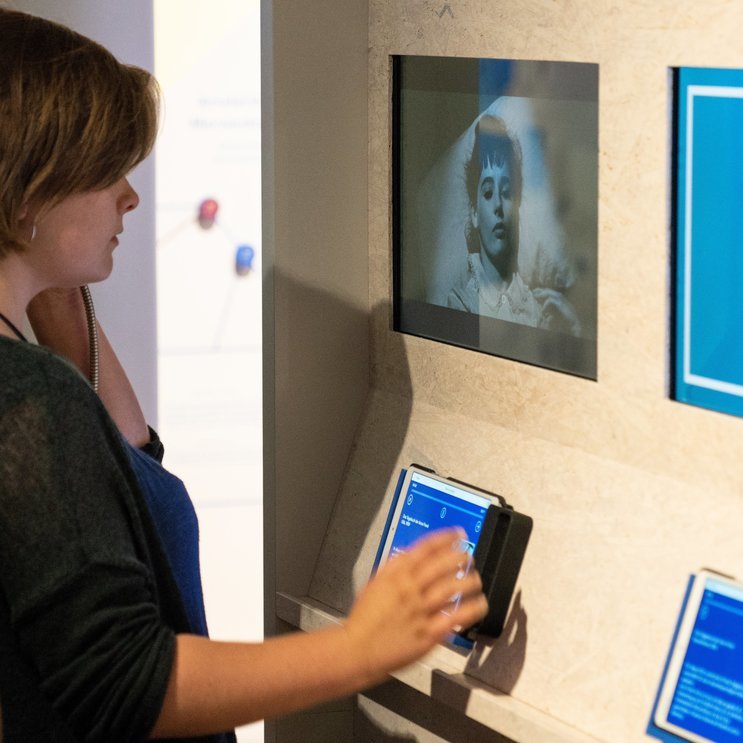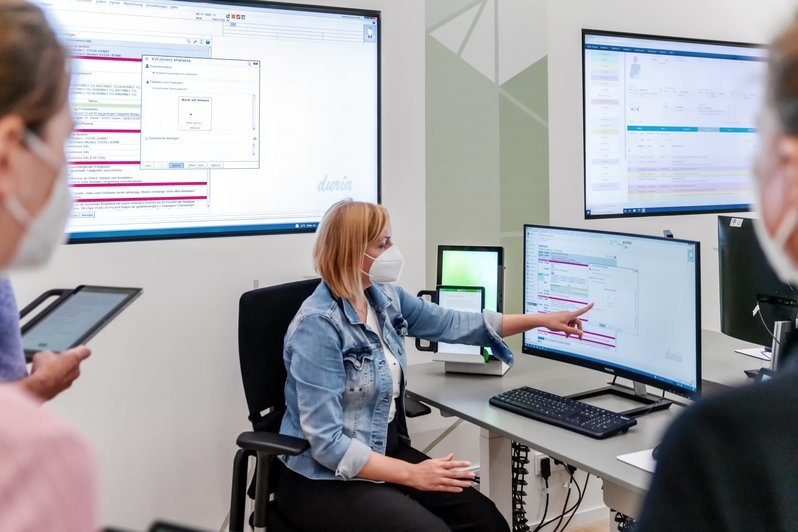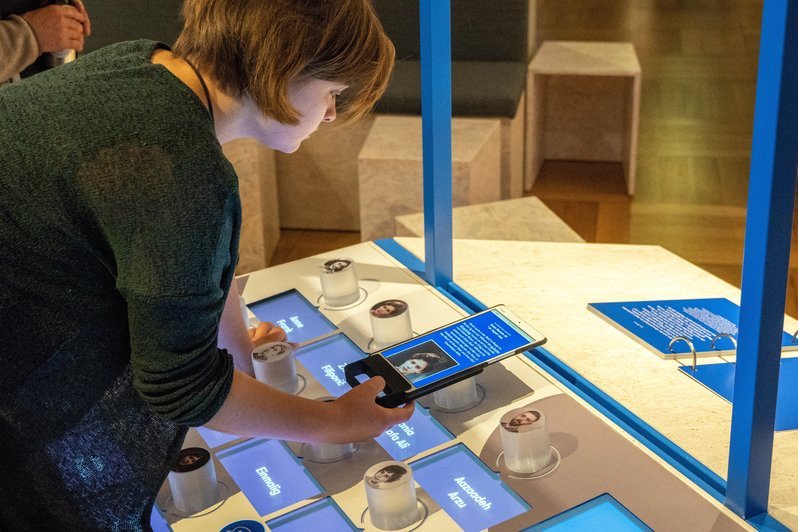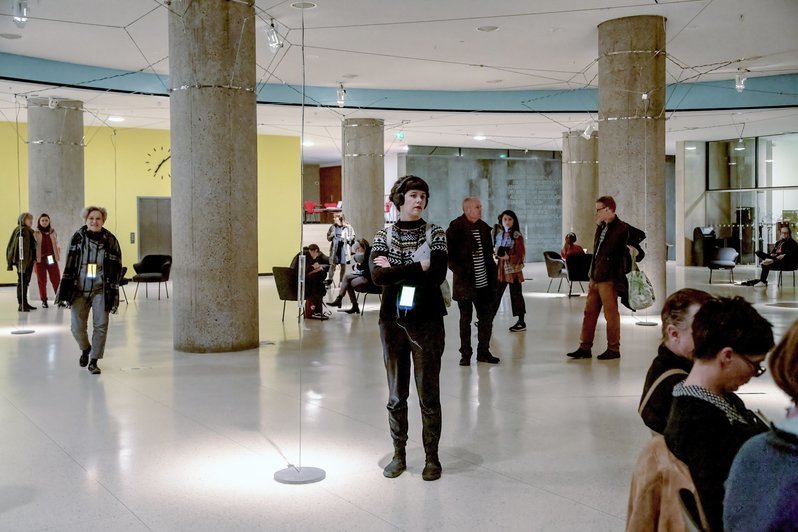MUSE/OS - The Personal Media Device
Museums, educational facilities, science centers, showrooms, shops or tradefair booths – entirely different spaces with a common question to solve: how can complex information be communicated in a clear, attractive, and effective way? MESO offers a powerful solution allowing for diverse media content, interaction formats and engagement with personal tablets running on the exclusive MUSE/OS software.
limited space, unlimited content
digital deep-dive
We believe in the power of real people meeting in real spaces. It’s where knowledge, culture, products and brands become tangible, where interaction happens and experiences turn into memories.
Space is usually the limiting factor as it defines how many exhibits, objects or media can be displayed. By adding a digital dimension, we push the boundaries of communication and create a new level of information density and depth.
Our custom MUSE/OS framework lends an active role to our clients in designing, creating and managing contents. In close collaboration, we develop solutions that are future-proof and can be modified or extended any time.
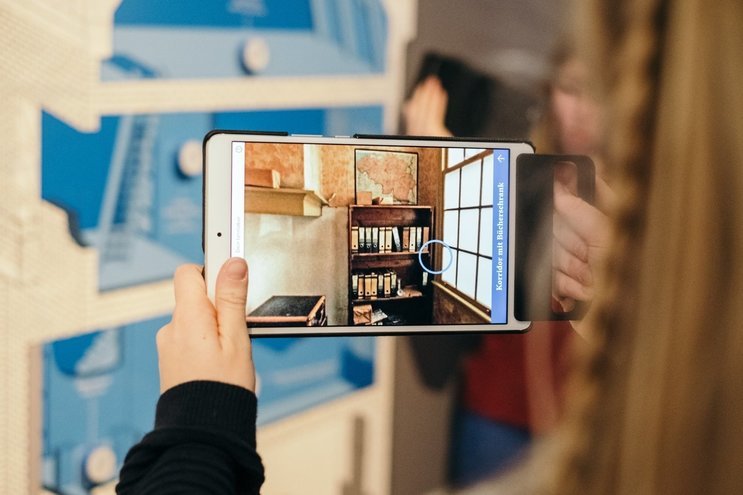
With a personal tablet device, every user is equipped with his or her very own tool to explore physical exhibits in a whole new way: with further content, new media formats, interactive games and features and the possibility to shape, influence and individualize the visit. At the same time, a channel for feedback, commentaries, statements and choices is established.
Depth and Simplicity
making Information accessible
The personalized tablet tool opens up a whole range of communication formats. Playful, entertaining, serious, interactive, detailed, augmented – the options are endless. And can be integrated into any space, from vast to small, from open to intricate, from nearly empty to packed with objects. Content can be presented bold and clear, but there is no limit to the layers of information added in a clever structure. This means, also a diverse group of visitors or customers can be met with a single communication concept no matter their age or level of knowledge.

Features, applications, possibilities
- Display of any audio and video content like in classic media guides.
- Easy integration of functions such as interactive simulations, games, 3D models, timelines, data bases and websites.
- Group games with multiple devices.
- Physical experiments with built in sensors.
- Control and guiding of visitor flow, notifications of event schedules, booking of appointments, display of free seats or waiting times.
- No blocking of popular exhibits because digital material do not need to be experienced at the exhibit but can be taken away.
- Less monitors in the exibitions.
A few basic questions turn the standard device into a personalized tool – and the anonymous visitor into a real person. Within the media infrastructure he or she can be recognized and tracked.
As we write our own software we can make sure this is optional and done with maximum data protection and data scarcity. It opens up a variety of interaction formats, tailors contents to individual needs.
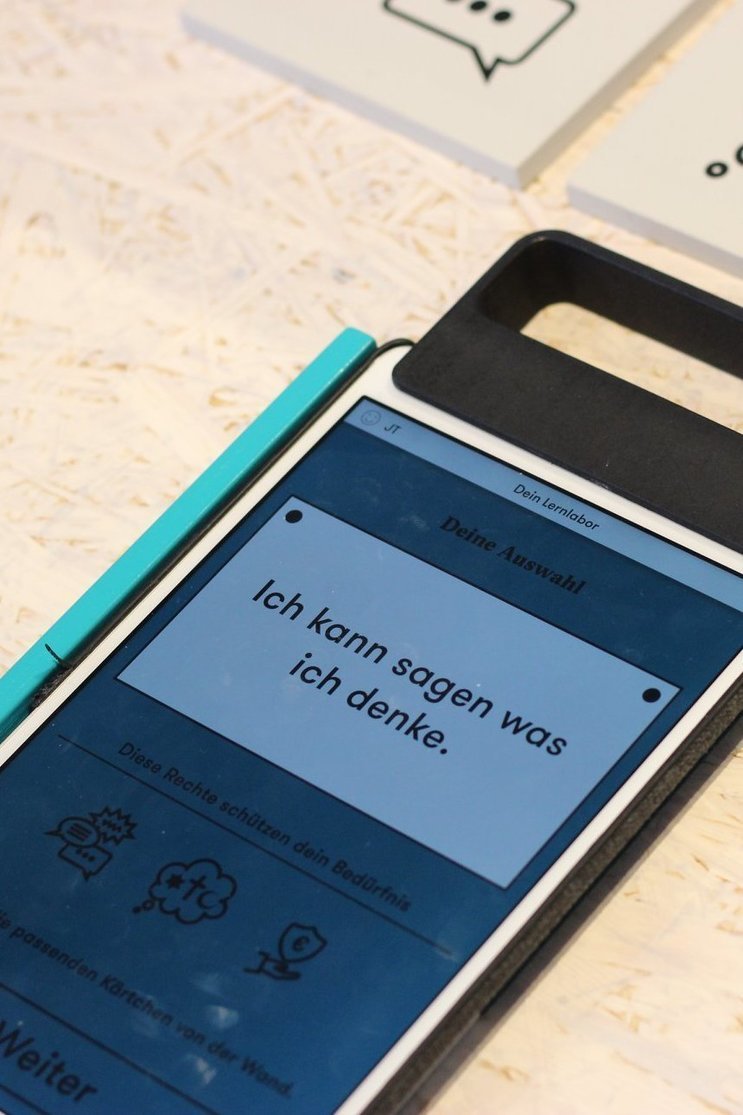
- Every user is personally addressed by (nick) name.
- Content is automatically tailored to individual needs when activating a station (language, age, level of knowledge, fields of interest etc.)
- New interaction formats can be implemented (narrative scenarios based on individual background, completion of parcours e.g. in training scenarios, personal opinion gathered for follow-up discussions and activities)
- Users can transfer contents to own smartphone via QR-Code or email (cloud service).
- Collection of feedback, profile of target group, popularity of individual topics.
How it works
Design meets Technology

Interaction is done with NFC technology, a simple yet very effective way of enabling communication between the tool and physical objects. Compared to alternatives like QR-Codes or iBeacons, NFC technology comes with a number of advantages, like
- simple and casual triggering without looking or aiming
- fast and precise triggering within a range of centimeters, therefore high information density
- no need for batteries, WLAN, transmitters or antennas
- NFC tags are cheap, maintenance-free, work without batteries and come in various designs
- simple and flexible integration into exhibits and mechanical components like wallpanels, flaps, puzzles or turntables
Success stories
The solution in action
The MUSE/OS solution has proven to be a powerful and versatile tool in complex real-world projects. In close collaboration with our clients, we developed custom approaches, each tailored to the purpose, content, target group and budget at hand.

Bildungsstätte Anne Frank
At the educational laboratory “Anne Frank. Morgen mehr”, young people learn about serious topics such as anti-Semitism, racism, exclusion, prejudgment or social injustice. With the MUSE/OS solution, we were able to turn the exhibition into an exciting experience. Visitors independently explore interactive stations, games, film sequences, text or audio, they interact with each other and are always asked for their own opinion rather than imposing one on them. In this way, they are encouraged to think critically and discuss their experiences within the group.
Junges Museum Frankfurt
The permanent exhibition “Opposed! Agreed? Revolution. Making. History” aimed at children and adolescents highlights the importance to speak up and actively shape the society we want to live in. A wealth of knowledge is communicated in four thematic rooms, each treating one historic protest movement. We made the diverse information available by connecting it to real objects and exhibits. Each visitor can decide to explore in-depth background information or rather learn by playing and interacting. In this way, children and adults can be equally addressed while not visually overloading the exhibition space.
